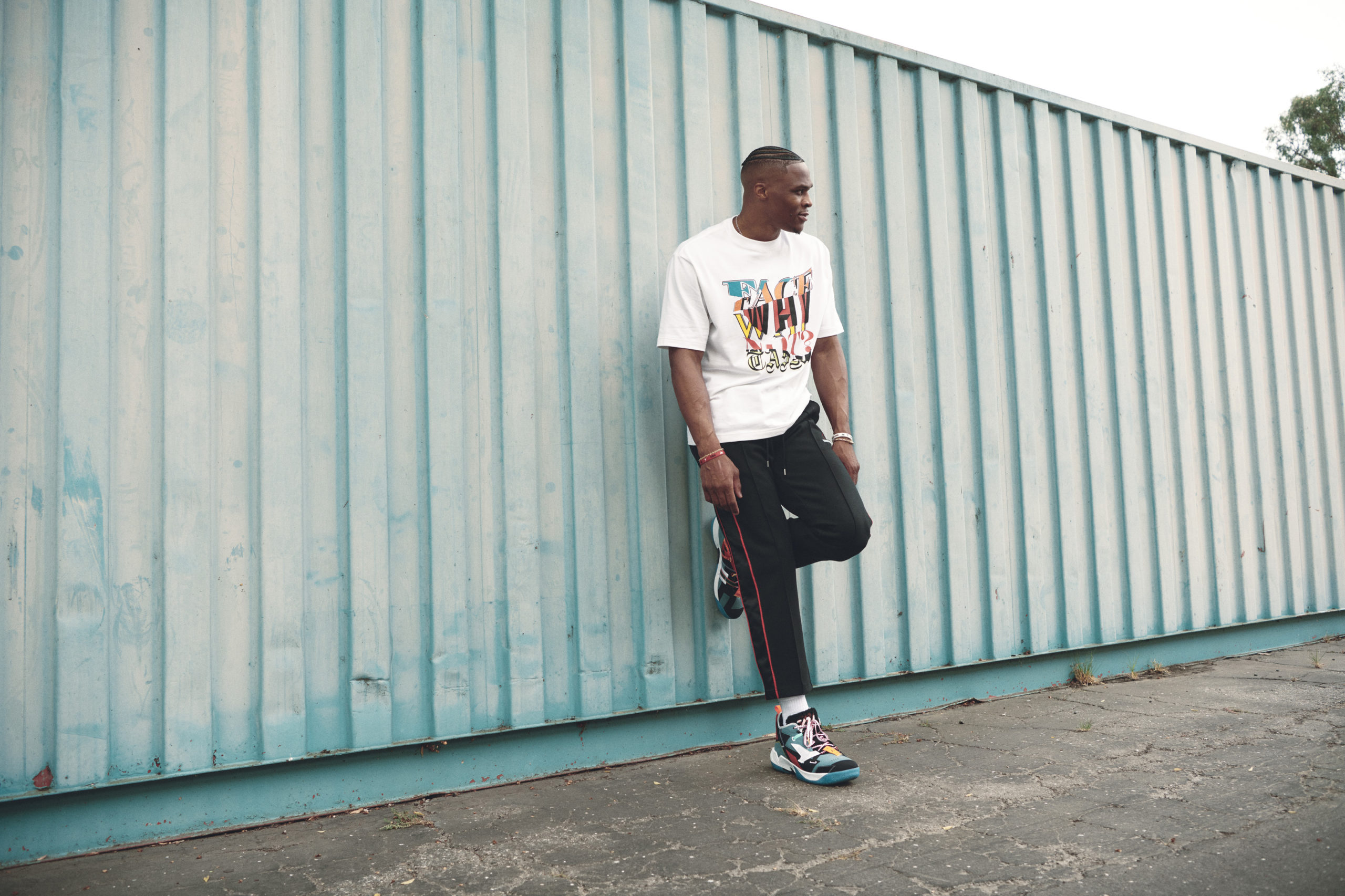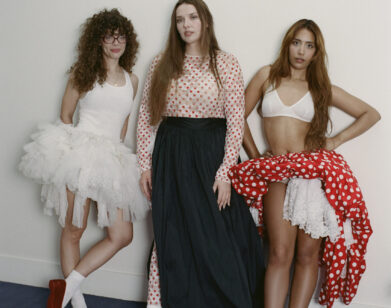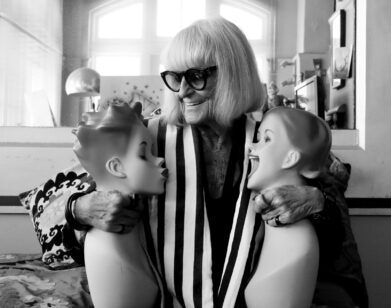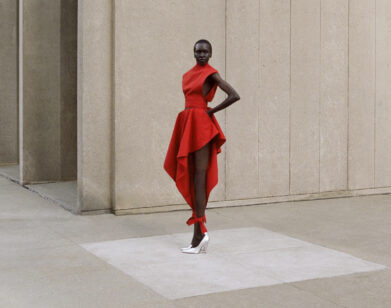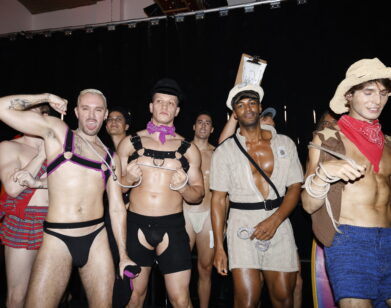Sports!
Russell Westbrook and Hiromichi Ochiai on Their Brand New Collaboration
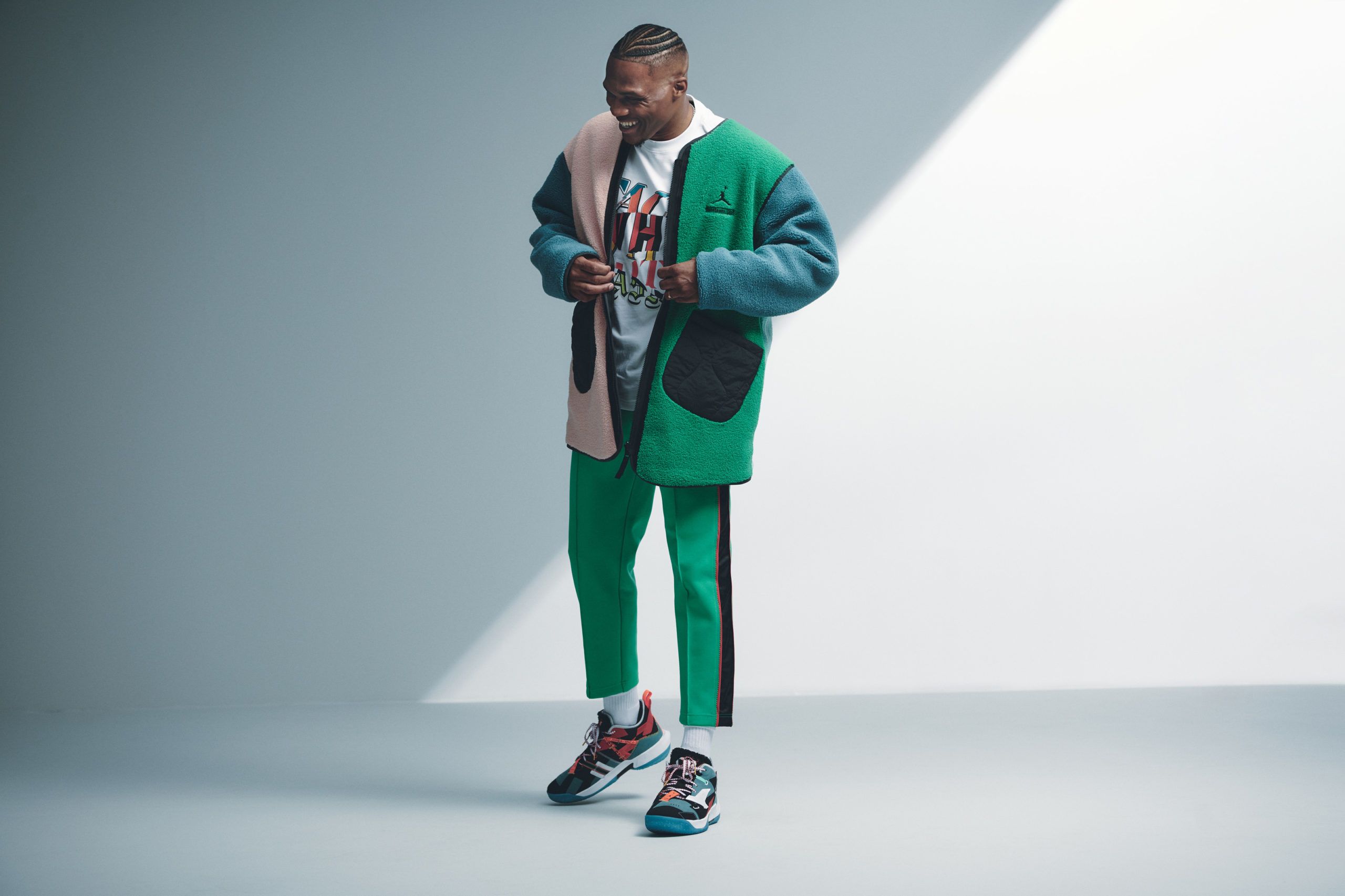
Photos courtesy of Jordan Brand.
When the NBA season begins this week, Russell Westbrook is going to have a new look in more ways than one. Not only will the superstar point guard be donning the jersey of his new team, the Washington Wizards (after a trade from the Houston Rockets brought him there in the off-season), but he’ll also be debuting his latest signature shoe with Nike’s Jordan Brand, the Jordan Why Not Zer0.4. The shoe is the centerpiece of Westbrook’s collaboration with Japanese label FACETASM, born out of his visit to its flagship store in Tokyo during Westbrook’s 2018 tour of Asia.
On the court, Westbrook is known for dismantling the opposition with his explosive athleticism and the relentlessness of a Terminator. But off the court, Westbrook, with his impeccable and sometimes outré gameday looks has become perhaps the premiere fashion ambassador in the highly image-conscious league. It’s no surprise then, that he and FACETASM founder Hiromichi Ochiai hit it off almost immediately, a mutual admiration that led to the collaboration. Along with the shoe, which will arrive on January 27, the collaboration includes a track suit, jacket, hoodie and T-shirt, all of which combine FACETASM’s Tokyo-centric point of view with the “Why Not?” mantra that has guided Westbrook throughout his career. Last week, Westbrook and Ochiai reconnected over Zoom to discuss their first meeting, working together, and achieving the special alchemy between performance and fashion.
———
RUSSELL WESTBROOK: How are you doing, Hiromichi?
HIROMICHI OCHIAI: Hi, Russell, I’m good.
WESTBROOK: I was a huge fan of the brand prior to going to Asia, and then I had the unbelievable opportunity of shopping in one of its flagship stores. I fell in love with the brand from there, and it started a conversation between myself, Jordan, and you to where hopefully we can do a collab together. And now we’re here today. I’m grateful for that relationship.
OCHIAI: Thank you. I remember when we first met in Tokyo, you visited our store and we were all excited because we heard that you’re a big fan of fashion and that you were interested in our brand. So all the staff in Tokyo store were really happy to see you. And then we visited Yoyogi Park for your event, which was really exciting.
WESTBROOK: That was cool. Did you know anything about the NBA prior to meeting me?
OCHIAI: Growing up, Michael Jordan was a the big NBA icon and a fashion icon for us. So when I was in junior high, Air Jordan was what was cool and we were also really excited about the Dream Team as well.
WESTBROOK: Nice. It has to be special for you and your brand to be able to collaborate with Jordan Brand Jordan. How has that process been, especially when you include myself inside the collaboration?
OCHIAI: As soon as I met you, I was really impressed by your smile, and also I thought we were bonded immediately, because we are both parents, and we have a lot of commonalities. And then I was invited to watch your game in Saitama, which was very exciting. And then on my way back home, I was informed that there may be an opportunity to collaborate with you which made me even more excited. That’s how I believe the collaboration started.
WESTBROOK: I would say that for myself, the process of having a collaboration with you has been unbelievable, which leads me to my next question. What are some of your favorite pieces from our collaboration?
OCHIAI: The Flight Jacket.
WESTBROOK: Me too.
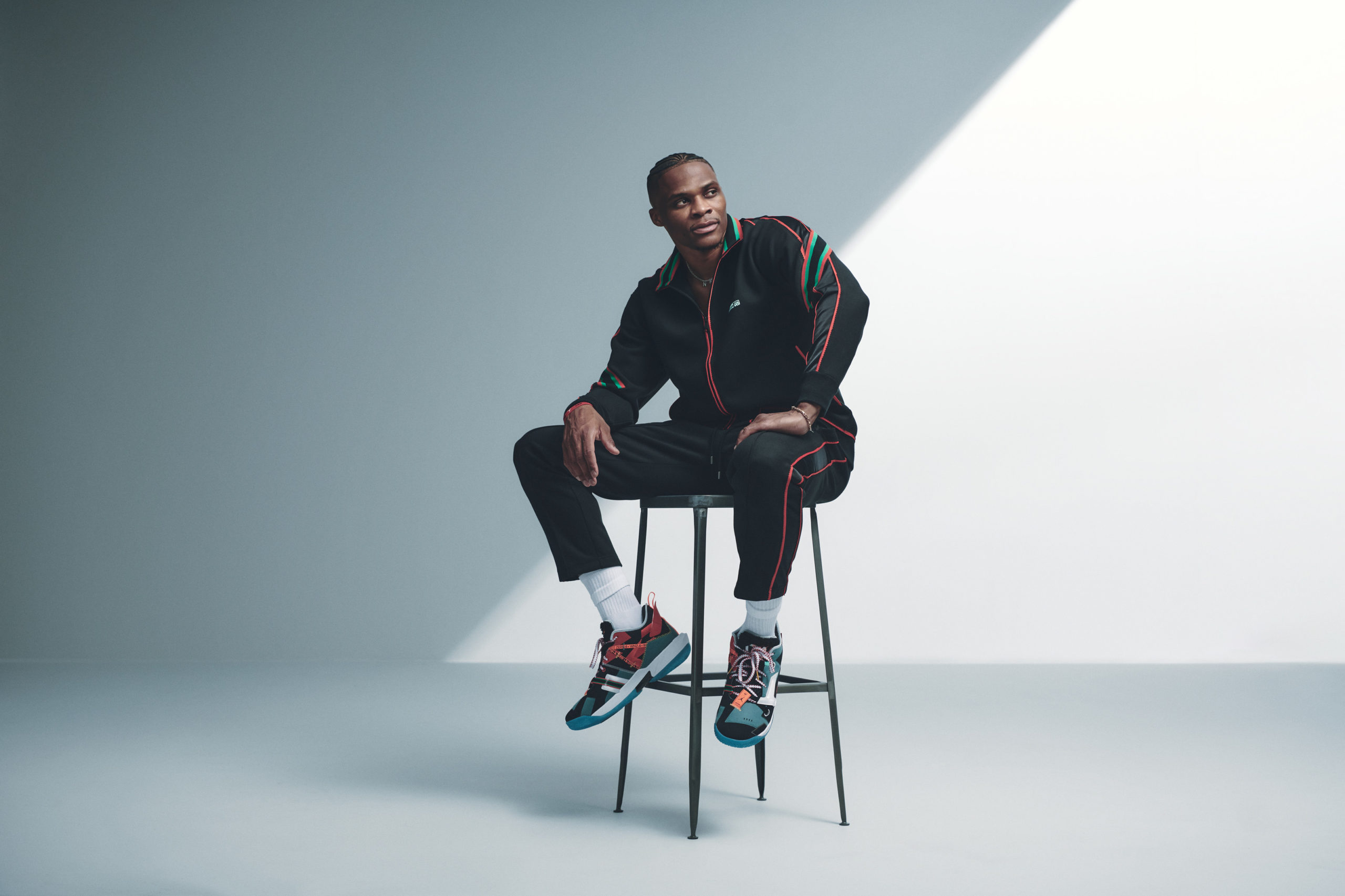
OCHIAI: I believe that’s a really unique piece, made out of the combination of your color scheme and my style. It’s a perfect mix.
WESTBROOK: Yes. I think the biggest thing that I love is the overall fit. I love your silhouettes, I love your fit, I love how it fits on the body, and I call that the Tokyo style, which is something that I like.
OCHIAI: The overall collection is a really unique combination of performance and fashion. I believe there has never been such a perfect mix of fashion and performance. And I believe that’s only made possible because of us.
WESTBROOK: Yes, I agree. I think the big part of it for me is being able to use your expertise and your knowledge in fashion on my side, the performance aspect, with basketball and being able to use that and put on a shoe that really excites me. It’s something that I look forward to doing again in the future.
OCHIAI: Yeah, I really appreciated working with you as a designer.
WESTBROOK: Thank you. For me and my brand, and obviously the Jordan Brand, being able to travel to Tokyo and understand fashion through a different lens was inspiring. I was super excited to be able to understand Tokyo style, because that’s their everyday life, and it’s something I took with me back to the States. And being able to be a curator and designer in this collaboration allowed me to be able to dive deeper into that, especially with your knowledge and understanding of what that Tokyo sensibility means.
OCHIAI: I think what we have created goes beyond Tokyo style. I was born and raised there, so naturally, everything incorporates some elements of the city. While growing up, I was wearing Jordan and Nike sneakers all the time, so Jordan and Nike are also my part of Tokyo style. While meeting with you and learning about you as an athlete and feeding your style or color, incorporating those elements created a new style which is unique to this collaboration.
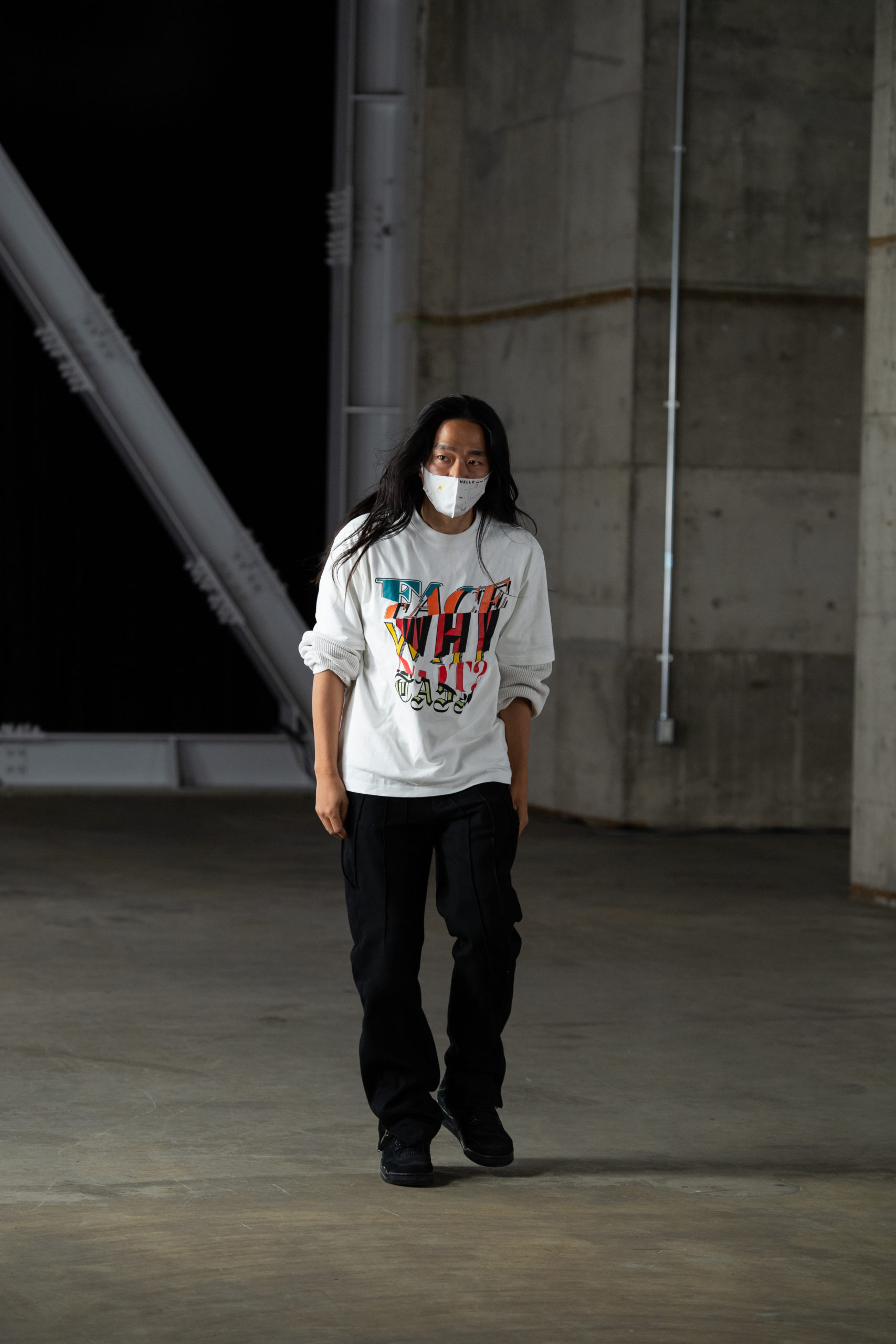
Photo by Koji Shimamura
BEN BARNA: How did Russell’s “Why Not?” mantra influence the collection?
OCHIAI: I already had that kind of emotion or mentality even before meeting with Russell, because I needed that mentality to work in Paris or work around the world. So that made working with Russell feel very smooth.
WESTBROOK: I believe my mentality allows me to be able to explore different business avenues. But in terms of being able to collaborate with Hiromichi, it’s something that makes sense, because once I connected with his brand and understood what it’s about, I knew that they’re not scared to go a little bit outside the box as it pertains to silhouettes and colorways. That resonates with me because the “Why Not?” mentality has been able to do things that sometimes everybody may or may not agree with, but you feel strongly about it. We both understand that you have to push the envelope a little bit to be able to get things done, or to be able to stay competitive. As Hiromichi mentioned, being in Paris and having fashion shows, you understand what that entails.
OCHIAI: Yeah, that’s really true. After learning about that phrase, whenever I needed to motivate myself, it came to mind.
BARNA: What are the first things you look at when designing a new shoe, and what role does the history or lineage of basketball shoes have in the creation of a new one?
WESTBROOK: In creating my shoe, I’m in the headspace of not trying to make my shoe look like anybody else’s, to do something different and unique that other people don’t do. And being able to do it with Hiromichi, whose brand is already in a space that nobody’s really been in, coming up with ideas is the easy part. We’re trying to put something together that both embodies his brand and my brand, by using different materials, different colorways, and different things that are not normally on a basketball shoe, but actually works That’s the evolution of being able to combine performance with fashion, putting those two together and using our creative minds to be able to create a shoe at a high level.
OCHIAI: It was super exciting and super educational because not many fashion designers have worked on shoes that really perform at the top level. It was a learning experience.
WESTBROOK: Being able to balance the performance and the fashion side of things is unique in the sense that you’re able to now use different materials, use different fabrics alongside the technology in the shoe that makes it a basketball shoe. But on the other side, now you’re aesthetically looking at it and being like, “Oh, this has different leathers or this has a corduroy or the laces are different here.” To me, that’s the creative side of things that makes it fun. I don’t think it’s a challenge at all. I believe that it’s a fun process to be able to go through, and it’s an important process because, as Hiromichi mentioned, nobody else is doing that. So when you’re able to mesh those two together, it’s a fun and exciting process that I really enjoy.
